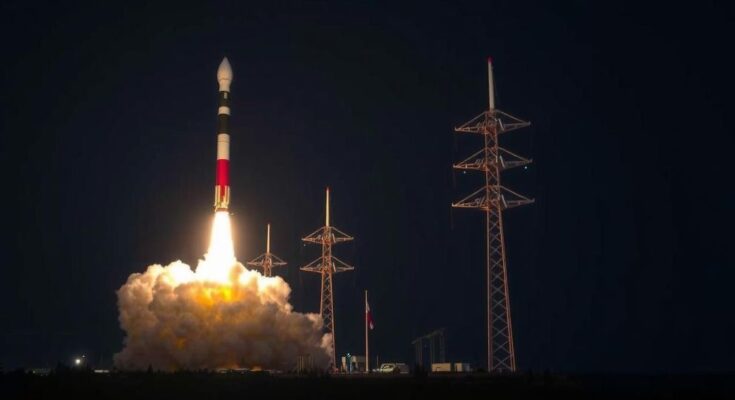The U.S. Air Force conducted a successful test of an unarmed Minuteman III ICBM from Vandenberg Space Force Base, which traveled 4,200 miles to a test site in the Marshall Islands. This test highlights the essential role of ICBMs in national defense, and although they are aging, plans for modernization are being made with the upcoming LGM-35A Sentinel program.
The United States Air Force Global Strike Command successfully executed an unarmed test of a Minuteman III intercontinental ballistic missile (ICBM) on Tuesday night. Launched from Vandenberg Space Force Base in California at approximately 11 p.m. Pacific Time, the missile featured multiple targeted reentry vehicles and traveled around 4,200 miles at speeds nearing 15,000 miles per hour to the Kwajalein Atoll in the Marshall Islands. The Ronald Reagan Ballistic Missile Defense Test Site gathered critical data regarding the missile’s performance during its terminal flight phase.
The missile was launched by airmen from the 625th Strategic Operations Squadron utilizing an airborne launch control system aboard a Navy E-6B Mercury aircraft. Selected randomly from the Minot Air Force Base arsenal in North Dakota, the missile was subsequently transported over 1,300 miles to Vandenberg and prepared for the test. Global Strike Commander General Thomas Bussiere emphasized the significance of such tests in demonstrating the U.S. strategic nuclear deterrent capabilities, remarking, “These tests are demonstrative of what striker airmen bring to the fight if called by the president. An airborne launch validates the survivability of our ICBMs, which serve as the strategic backstop of our nation’s defense and defense of allies and partners.”
Although this test was not a response to any current international tensions, it affirmed the United States’ continued commitment to maintaining a safe and reliable nuclear deterrent. Presently, the U.S. possesses approximately 400 nuclear-armed Minuteman III missiles situated in 450 silos spanning Wyoming, Montana, North Dakota, Colorado, and Nebraska. However, these missiles are more than five decades old and projected to be replaced by the LGM-35A Sentinel in the 2030s, despite facing challenges such as rising costs.
The Minuteman III missile, first introduced in the mid-1960s, serves as a pivotal asset in the United States’ nuclear deterrent strategy. As an intercontinental ballistic missile, it is designed to respond to nuclear threats and ensure strategic stability. The Air Force conducts regular tests of these missiles to verify their operational reliability, safety, and effectiveness. The ongoing modernization efforts, including the transition to the Sentinel system, are critical as the existing Minuteman III missiles approach the end of their operational lifespan.
In conclusion, the recent test of the Minuteman III intercontinental ballistic missile reflects the U.S. Air Force’s commitment to maintaining a robust and reliable nuclear deterrent. Through routine testing, the Air Force demonstrates the effectiveness of its strategic capabilities and ensures the readiness of its nuclear forces. Looking ahead, the development of the LGM-35A Sentinel will play a crucial role in sustaining the United States’ deterrence posture in the coming decades.
Original Source: www.defensenews.com




